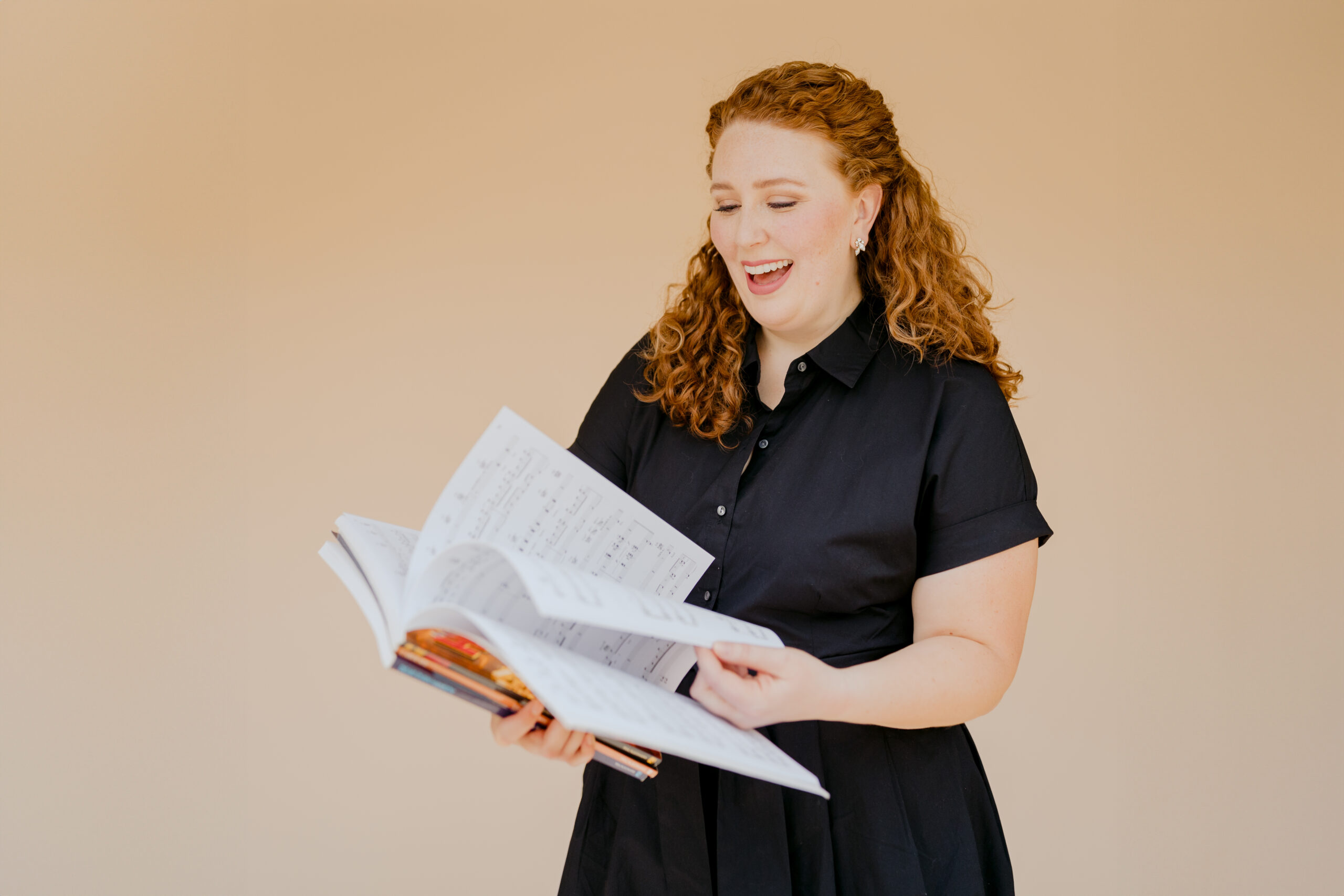Is your mix voice feeling weak? Your belt a little shouty? Your range disjointed?
If you trained classically—especially as a soprano—there’s a good chance your passaggio (aka your “gear shift” point) is in a different place than you need it to be for contemporary singing.
Let’s dig into why that matters.
What Is the Passaggio?
The passaggio is a term used to describe the transition area between vocal registers—usually where singers start to feel a shift, or transition between chest voice and head voice.
For classically trained sopranos, this first register shift (yes, there are more than one!) is often taught to occur around E or F above middle C. If you’ve studied opera or traditional western classical technique, you were probably taught to shift into a lighter, head-dominant tone at that point.
In classical music, this works beautifully.
But in contemporary singing—like musical theatre, pop, rock, worship music, and other crossover genres—the passaggio functions a little differently.
The Contemporary Passaggio Is Higher
In most modern vocal pedagogy, especially when working with sopranos and mezzos transitioning into belt or mix, we treat the first shift as happening closer to:
👉 A♭, A, B♭, or even B
Instead of E or F
This is a full third or fourth higher than many classical singers are used to!
Why Does This Matter for Your Singing?
If you start mixing too early—around an E4, for example—you don’t have enough vocal strength or intensity built up for the kind of sound most contemporary songs require.
And if you shift too late? You end up yelling or dragging chest voice too high, which leads to tension and fatigue.
Contemporary singers need to build chest voice higher, and then blend into mix at a point that gives them power and flexibility.
If your current “map” of where to shift doesn’t match the style you’re trying to sing… you’ll keep running into issues.
Common Signs Your Passaggio Needs Rethinking
- Your belt sounds light or disconnected, especially around A4–C5
- You feel like you’re mixing too early, and the sound lacks power
- You try to sing a phrase and your voice “flips” or cuts out unexpectedly
- You’ve got a great classical sound, but your pop/MT songs feel uncertain or too “pretty”
Sound familiar? You are not alone.
So… How Do You Shift the Map?
If you’re coming from a classical background and moving into contemporary musical theatre or pop/rock, here’s what I recommend:
1. Train Chest Voice Higher
This can feel “too heavy” at first, but it’s essential for building strength and intensity. Trust the process!
2. Start Mixing Around A–B♭ 4, Not F4
Let your chest voice do its job before bringing in more head-dominant coordination.
3. Use Functional Exercises, Not Just Style Coaching
You don’t need another teacher who tells you to “just think speech-like,” or, “raise your YA YA!” You need exercises that actually strengthen and rebalance your voice.
You Deserve the Right Tools for the Style You Want to Sing
Rethinking your passaggio isn’t about undoing your classical training—it’s about building a new roadmap that actually gets you to the sound you want.
That artistry is possible for you, too!
🎤 Resources to Help You Build Your Mix and Belt
✅ Master Your Mix Course — A step-by-step voice lesson plan that helps classically trained singers build a functional mix voice and strong belt
✅ CWVS Warm-Up Series — Instant downloads for legit, mix, and belt warm-ups (use code CWVS20 to save 20%)
✅ Join My Lesson Waitlist — One-off lessons with me, offered as my schedule allows
✅ Lessons with Brooke or Erin — Both are CWVS associate teachers currently accepting new students
Still unsure what your voice needs?
Get in touch! I’m here for you.
You’re on your way to vocal freedom—and I’m cheering you on every step!





